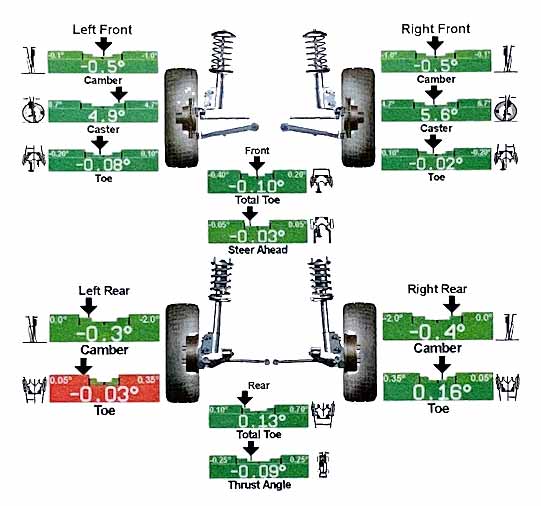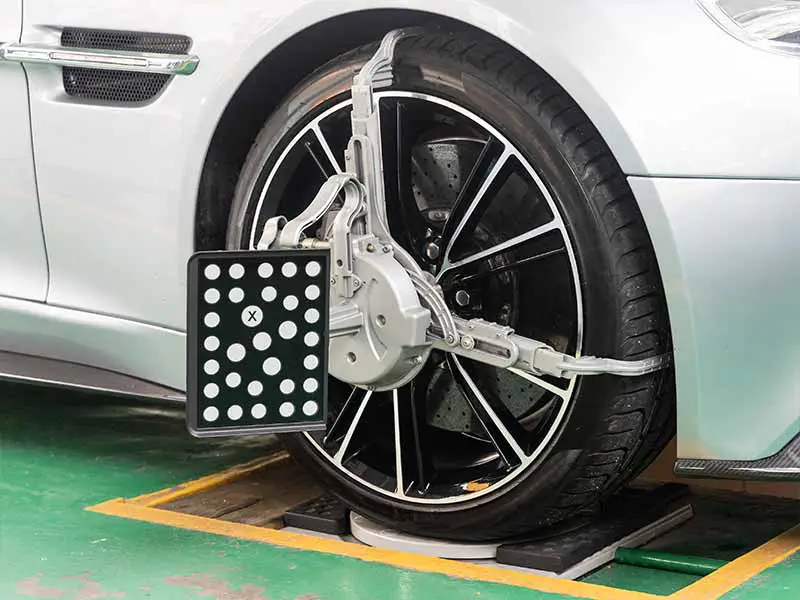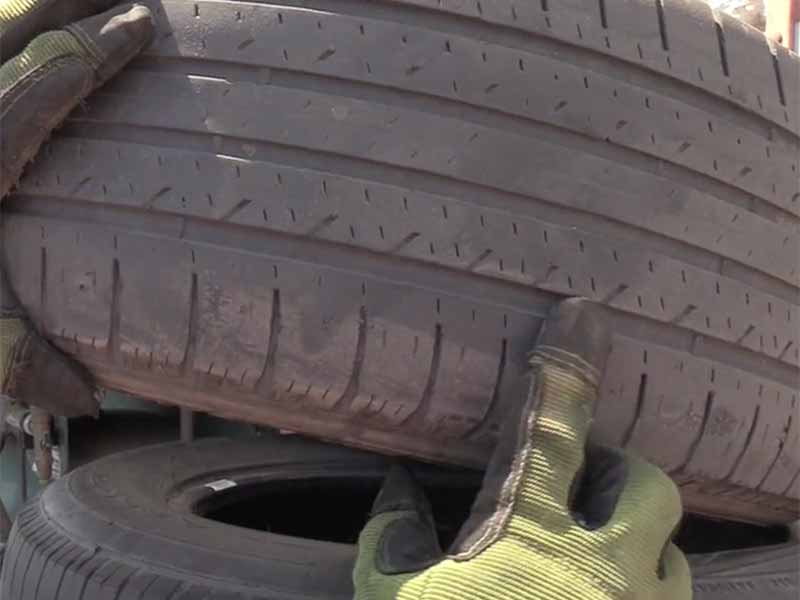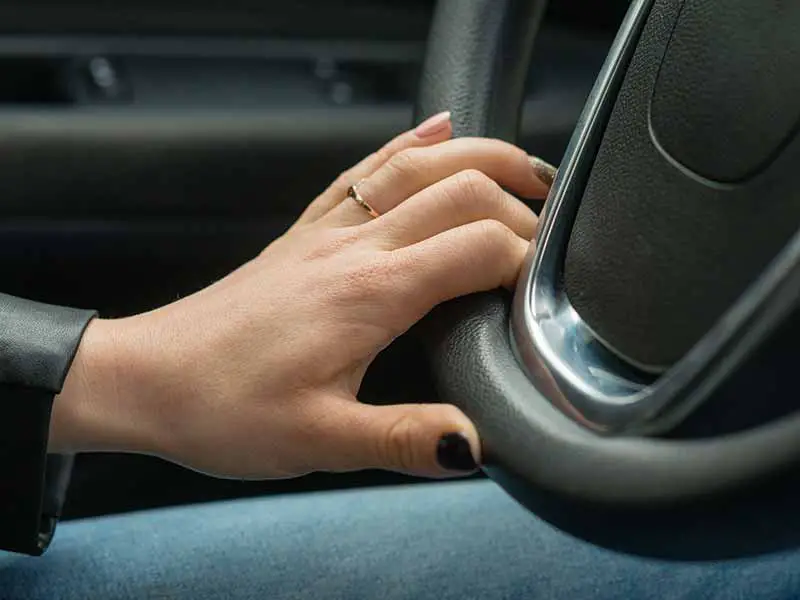Ever felt like your car has its own personality, pulling you left or right without your permission? It’s not just being quirky; there’s science and mechanics behind it!
Car Still Pulls After Alignment
If your car still pulls after an alignment, it’s likely due to issues like uneven tire pressure, worn-out brake pads, or even previous improper wheel alignment. Addressing these factors can help in resolving the pull.
In this article, we’ll dive deep into understanding car or truck pulling, explore the common reasons behind it, the crucial role tires play, and how to troubleshoot and address the issue effectively.
Let’s take a closer look.

Understanding Pulling
Car pulling is a bit like when you’re trying to walk your super-excited dog on a leash, and he keeps tugging you in one direction. Except, in this case, it’s your car or truck that’s doing the tugging, and it can be pretty concerning!
What is Car Pulling?
Vehicle pulling is when your car tends to drift or veer towards the left or right when you’re driving straight. Imagine holding your steering wheel as you usually do and feeling the car wanting to go a different way than you intended. Yep, that’s your car giving you a hint something might be off!
Why Does Direction Matter?
The direction your car pulls can offer clues about what’s going on:
- Pulling to the Left:
- Could be an issue with the left tire. Maybe it’s under-inflated or damaged.
- Might be a problem with the left-side brake dragging more than the right.
- Pulling to the Right:
- Maybe the right tire has some trouble. It could be worn out differently or missing some air.
- The braking system on the right side might not be releasing as it should.
Now, these are just starting points. The actual cause might be a mix of multiple issues, but knowing the direction can help narrow things down.
So, Why Should You Care?
Ignoring a vehicle pull might be tempting, especially if it’s slight. But here’s the thing:
- Safety: A car that pulls can be hard to control, especially during emergencies or on wet roads.
- Tire Health: If tires are the culprits, leaving them unchecked can lead to more damage, reducing their lifespan and, of course, affecting your wallet.
- Vehicle Wear: A pulling car means some parts are working harder than others. This can lead to faster wear and tear of those components.

Common Reasons for a Car Pulling After Alignment
Let’s go over some of the most common reasons why your car is pulling to the right or left:
Improper Wheel Alignment
Wheel alignment is all about making sure your tires are pointing in the right direction. Think of it like the tires’ GPS. But sometimes, that GPS might be a bit off.
- Mistakes Happen: Even the best technicians can sometimes miss the mark a tad. Equipment inaccuracies or a bump in the road post-alignment can throw things off.
- Not a One-Size-Fits-All: Every car model can have its own quirks. Alignment for one model might not work as well for another.
Tire Pressure and Issues
Air pressure inside your tires is like the energy drink for your car. Too much or too little, and your car might not ‘feel’ right.
- Uneven Air Pressure: If one tire has less air than the others, your car will feel it. And it’ll likely pull towards the ‘tired’ tire.
- Regular Checks are Key: It’s super important to check tire pressure regularly. Seasons change, temperatures fluctuate, and so does tire pressure.
Damaged or Worn Out Tires
Tires aren’t just rubber donuts. They’re your car’s shoes, and just like your favorite sneakers wear out, so do tires.
- Uneven Wear: If one tire wears out differently than the others, it can make your car lean a certain way.
- Inspect Regularly: Look for cracks, bulges, or bald spots. These are signs it might be time for new tires.
Brake Pads and Their Influence
Brakes are essential for stopping, of course. But they can also be sneaky culprits behind your car’s pulling antics.
- Worn-Out Pads: If brake pads on one side are more worn than the other, your car might pull to the side of the better pad.
- Dragging Brakes: Sometimes, a brake might not release properly. That’ll make your car feel like it’s being held back on one side.
Torque Steer: The Invisible Hand
For those with front-wheel-drive cars, torque steer might be a term you’ve heard (or felt).
- It’s About Power: When the engine’s power doesn’t get distributed evenly to the front wheels, one wheel might get more ‘oomph’ than the other.
- The Result: Your car veers off to one side, especially when you accelerate quickly.

The Role of Tires in Vehicle Pulling
You know how shoes can make or break an outfit? Well, tires are like the shoes of your car, and they play a massive role in how your vehicle behaves on the road. So, let’s talk tires!
Importance of Tire Rotation
Tire rotation is like musical chairs for your tires, and there’s a good reason behind this game.
- Even Wear: By regularly changing each tire’s position, you’re making sure they wear out evenly. This can prevent your car from favoring one side.
- Longer Tire Life: Evenly worn tires last longer, saving you money and trips to the mechanic.
Spotting Defective Tires
Sometimes, you might get a lemon — and not the kind you make lemonade with. Here’s how to spot a problematic tire:
- Vibrations: Feeling more vibrations than usual when driving? A defective tire might be to blame.
- Uneven Patterns: If you spot weird wear patterns or bulges on your tire, it’s waving a red flag at you.
- Performance Issues: Struggling with traction or noticing your car isn’t handling like it used to? Time to inspect those tires!
So, Why Do Tires Cause Pulling?
Tires are your car’s only contact with the road. When they’re not happy, you’ll feel it. Here’s why:
- Different Tread Depths: If the tires on one side of your car have more tread (because they’re newer or less worn) than the other side, the car might pull towards the side with the deeper tread.
- Internal Damage: Sometimes, damages inside the tire, like broken belts, can cause pulling. This damage is not always visible, so it can be a sneaky cause.
Tips to Keep Your Tires Happy
- Regular Checks: It’s like a health check-up but for your tires. Look for any signs of damage, wear, or foreign objects.
- Maintain Proper Pressure: Remember the tire energy drink analogy? Keep them inflated just right, not too high or too low.
- Rotate, Rotate, Rotate: Don’t forget the tire musical chairs. Regular rotation helps ensure even wear and longer tire life.

How to Troubleshoot and Address the Issue
Having a car that pulls can feel like wrestling with a stubborn shopping cart that just won’t go straight. But fret not! With some detective work and a bit of know-how, you can get to the root of the problem.
Step 1: Check Tire Pressure
Just like you need the right amount of air in a balloon to make it float just right, your tires need the right air pressure.
- Tools You Need: A tire pressure gauge. It’s an inexpensive tool, and a must-have for every car owner.
- What to Do: Check the pressure in each tire and compare it to your vehicle’s recommended level (usually found on a sticker inside the driver’s door).
- The Fix: If the pressure’s off, adjust it! Fill up any tires that are low, or let some air out if they’re too full.
Step 2: Inspect Those Tires
Your tires tell stories. Stories of long roads, sharp objects, and more.
- Uneven Wear: This can make the car lean one way. Check if the tread depth is consistent across the tire and between tires.
- Damage: Look for cracks, bulges, or any foreign objects, like sneaky nails.
- Rotation Time: If wear patterns suggest it’s time, rotate those tires!
Step 3: Look at Your Brakes
Your brakes don’t just stop your car; they can also play a part in pulling.
- Signs of Trouble: Does one side of your car get dirtier than the other? It might be a brake fluid leak.
- Listen Up: Hear any grinding or squeaking when you brake? Could be worn-out brake pads.
- The Fix: Address any brake issues with your mechanic. Brakes are essential, so don’t cut corners here!
Step 4: Consider Wheel Alignment
Sometimes, it’s good to revisit old fixes.
- Signs You Need One: If you have a crooked steering wheel or if your car drifts when you try to go straight, it might be time for an alignment.
- DIY or Mechanic: While some people can handle a wheel alignment in their garage, it’s often best left to pros with the right equipment.
Step 5: Consult a Professional
If you’ve tried everything and your car still pulls, it’s time for some expert eyes.
- Get a Second Opinion: Sometimes, a fresh perspective can spot things you might’ve missed.
- Trust But Verify: It’s okay to ask questions. If a mechanic suggests a fix, understand the why behind it.
Resources
Below are some links you may find helpful when learning about tires
- Why is your car pulling to one side and what to do now – Firestone
- Why does my car pull to the right? – Get Jerry
Final Thoughts
Driving straight shouldn’t feel like a tug-of-war. A car pulling to one side, especially after an alignment, can be a sign of various underlying issues. From the tires’ pivotal role—be it uneven wear, air pressure disparities, or even internal damage—to brake pad conditions and the occasional missteps in wheel alignment, many factors can influence your vehicle’s straight path.
Regular check-ups, keen observations, and timely interventions can save the day. Remember, it’s not just about comfort; it’s about safety. Ensure your vehicle’s wellness, and it’ll ensure yours.
Good luck and happy motoring.





